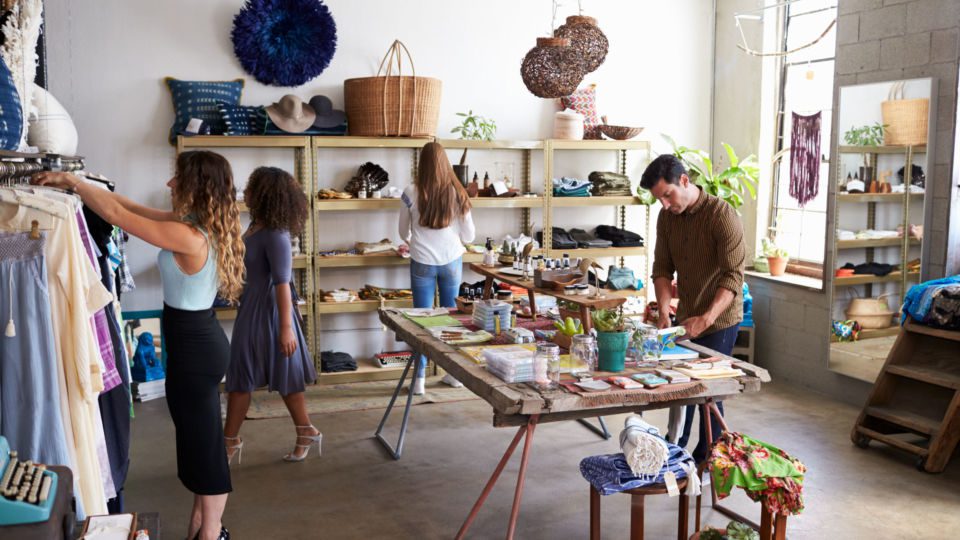 The COVID-19 pandemic has fundamentally altered the way we live, work and spend in ways we couldn’t have imagined prior to the outbreak. The accessibility of retail has been hugely restricted, with a prescriptive list of essential stores functioning and the wider industry’s foot traffic effectively paused indefinitely. Though the news has seemed overwhelmingly bleak for many weeks, signs of normality are starting to appear around the world, allowing us to begin to imagine what our ‘new normal’ looks like.
The COVID-19 pandemic has fundamentally altered the way we live, work and spend in ways we couldn’t have imagined prior to the outbreak. The accessibility of retail has been hugely restricted, with a prescriptive list of essential stores functioning and the wider industry’s foot traffic effectively paused indefinitely. Though the news has seemed overwhelmingly bleak for many weeks, signs of normality are starting to appear around the world, allowing us to begin to imagine what our ‘new normal’ looks like.
Retailers have a key job to do in making stores feel welcome and safe again to consumers that will have abstained for several weeks. With increased price sensitivity, higher digital engagement and comfort levels and a rise in attention to cleanliness, stores will have to go the extra mile to make themselves attractive to customers. It is hard to make definitive assumptions about what the retail landscape will look like moving forward, since new rules are being made regionally and globally in near real time, but here are some trends we see gaining traction that we believe will stick around for a while.
Clear communication and efforts to mitigate fear and improve safety: The top two imperatives. What we are currently seeing and experiencing is a number of devices and initiatives in place to improve cleanliness and safety for customers and staff: Perspex screens between the customer and cashier; the suggested or enforced use of masks for everyone; in-store aisles being transformed into one-way-only pathways; the use of UV/LED germicidal solutions and health check kiosks; explicit rules regarding waiting in line and even security cameras measuring social distance between shoppers and reminding them in real time when it’s not being respected. In-store messaging, whether via overhead audio announcements or digital screens, will continue to serve as a powerful tool to inform, reinforce and assure both consumers and employees that safety measures are in place. Back-of-house initiatives also will focus content on safety/sanitization protocol for employees.
Post-lockdown, we may see an inherent nervousness in consumers for weeks or months to come, so we believe a number of these measures will remain for the foreseeable future. Those brands that leverage both new and existing touch points to keep their consumers calm, informed and engaged will gain a competitive advantage as we all re-emerge into sharing public spaces again.
Advertisement
Brand-based community will go to a whole new level. This trend was already on the rise before COVID-19, so we believe we’ll see it booming in the coming months. During this time frame, consumers have developed a stronger loyalty to those brands that have maintained their relationships within their communities — brands that have been seen as tirelessly serving their community during the COVID-19 crisis in creative ways that are “above and beyond” expectations; those that are continuing to rise to the occasion by adapting to serve them in new ways; and those that are engaging with them while creating or enabling new social traditions or healthy routines.
Making a lasting impression on these consumers and creating an expectation for this to continue after the lockdown is well behind us will benefit brands in the long term. We’ve seen numerous examples on community sites like NextDoor.com, in which neighbors have essentially created cheering squads or fan clubs for local or regional brands that they believe have best served their communities during this time. And even national brands are paying it forward within their communities, including relief and assistance programs from major retailers like Walmart, Target and Lowe’s. A renewed sense of tribe and lasting brand loyalty will rise from this, and those brands that leverage it will be on the winning side.
Technology is, once again, the key to building the future of retail, with a “contact-free economy” being pushed. On top of the encouraged use of contactless spending and the already known Amazon cashierless stores, present in 25 locations across the U.S., retailers such as Publix and Chick-fil-A are rolling out contactless pay options. For example, this may mean that consumers can now scan a product’s barcode as they shop and then pay from their mobile device using a card or Apple Pay — all via the retailer’s app. We expect the coronavirus pandemic to lead many more retailers to rethink their own in-store payment experience in favor of more app-centric options.
Re-inserting joy: Showrooming and sensorial marketing will play a central role in encouraging an uneasy consumer to re-engage in-store. Slowly but surely, shopping will go back to playing a role as a leisure experience. After a long period of feeling somewhat “trapped” in their homes, consumers will look for justifiable opportunities to explore stores again and experience a newly re-found — and very welcomed! — sense of normality.
With new standards in place to encourage feelings of safety, the desire to enjoy the social aspect of shopping again and to view it as a form of entertainment vs. necessity will impact consumer behavior…and should therefore impact retailer behavior in terms of the overall experience a retailer offers in-store and the shopping moods they create. New approaches will be developed for special events, demonstrations, pop-ups and other opportunities for product discovery where upbeat music, intriguing scent marketing and compelling digital content all will contribute to consumers getting to enjoy the in-store experience again. The desire to reconnect with a more experiential universe will open up opportunities for retailers to be more creative in-store while also filling the gaps of what we expect to be emptier spaces. It’s an opportunity to reset the right mood for stores and public places and bring a new sense of inspiration.
More digital, more data, more personal. With older generations being newly comfortable with digital channels and new consumer segments having overcome barriers to trial new digital products and services, consumers will expect brands to use this new digital relationship to know them even better — and to better use that data to deliver more personalized marketing and products accordingly.
In addition, with customer decision journeys encompassing more digital touch points, shoppers will expect companies to have the consistent presence online and offline that they have promised but often fallen short on in previous years. Capturing and managing data transparently and resourcefully will be essential to deliver more personalized products and experiences.
As we look to the future, this crisis will undoubtedly have some lasting effects. Ultimately we know consumer expectations and shopping behaviors will change; comfort levels with technology platforms — and a greater dependence on technology overall — will rise; queuing and payment systems will change; the desire for continuous customer and employee communications, including safety communications, will increase; demands for curbside pickup and delivery options will grow stronger; the role and perceived value among customers of the frontline employee will be greater; the reliance on and importance of conferencing systems will gain traction; and the need for greater customer engagement through all aspects of the purchase journey will rise.
A new in-store customer experience is shaping, and we will continue to envision it to help our clients adapt and ensure brick-and-mortar stores can continue to play a central and vital role in building up the relationship between brands and their customers.
Jaime Bettencourt, Mood Media’s SVP of North America Business Development, is an accomplished senior-level sales and marketing leader with a proven ability to achieve double-digit revenue growth. She is recognized for designing world-class customer experiences for leading lifestyle and retail brands, with a track record for leading teams and leveraging custom, complex in-store marketing, media and technology solutions for Fortune 500 clients in the retail space. During her 18+ year tenure at Mood Media, she has been in various marketing, branding and sales leadership roles and has worked with global organizations to enhance in-store experiences through targeted brand initiatives and marketing strategies supported by customer insights and analytics. She has also served as a speaker at leading retail industry events, acts as a Fashion Retail Board Member within the Connecting Point Marketing Group, and has been featured in numerous leading national and industry publications.















